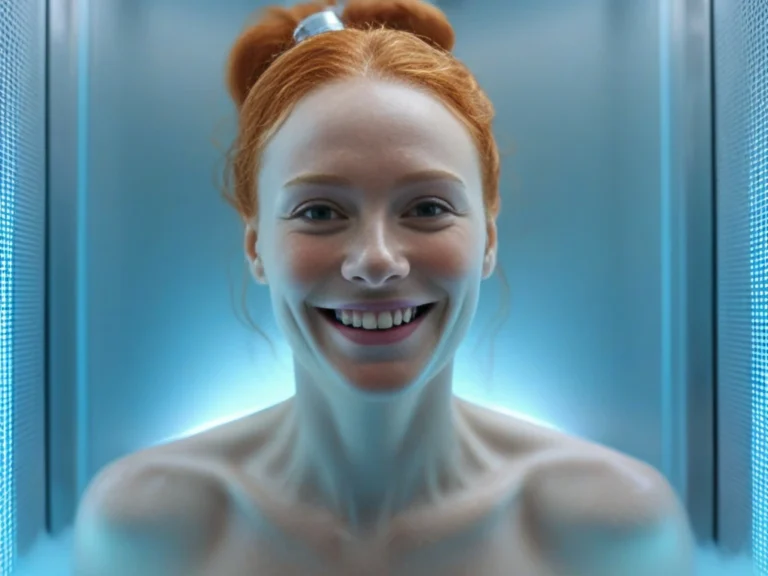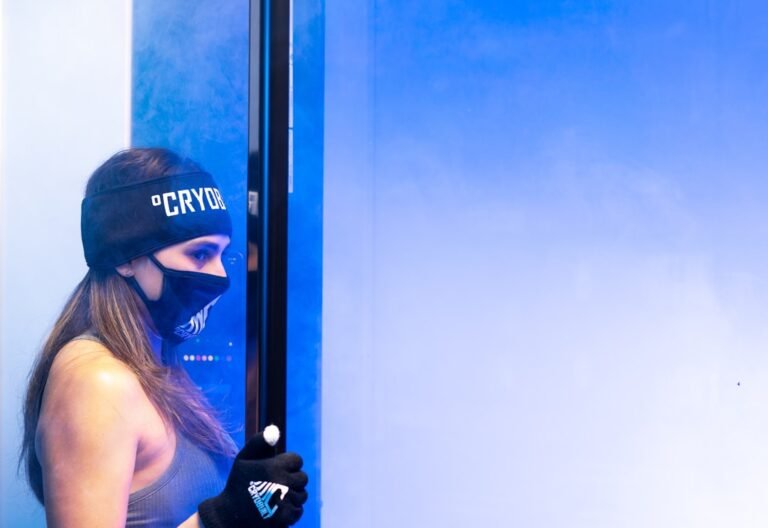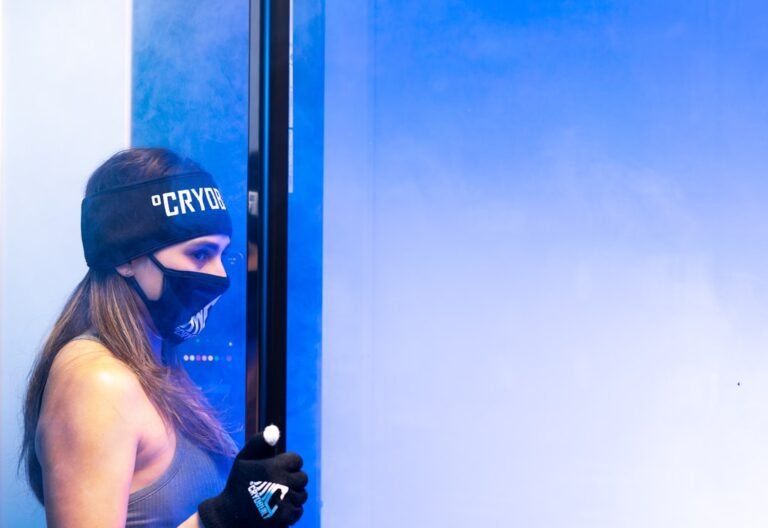Are Cryotherapy Weight Loss Claims Fact or Fiction?
Cryotherapy has gained popularity in recent years as a potential weight loss method. This treatment involves exposing the body to extremely cold temperatures for a short period of time, typically in a cryotherapy chamber or through the use of cold packs or ice baths. The idea behind cryotherapy for weight loss is that the cold temperatures can boost metabolism and burn calories, leading to weight loss.
Summary
- Cryotherapy involves exposing the body to extreme cold temperatures to promote weight loss
- Cryotherapy may increase metabolism and reduce inflammation, leading to weight loss
- Studies have shown mixed results on the effectiveness of cryotherapy for weight loss
- Potential risks of cryotherapy include skin damage and hypothermia
- Common misconceptions about cryotherapy include that it can target specific areas for weight loss
- Diet and exercise are still important factors in weight loss, even with cryotherapy
- Some individuals have reported success with cryotherapy for weight loss
- Critics argue that there is not enough scientific evidence to support cryotherapy for weight loss
- Alternatives to cryotherapy for weight loss include traditional diet and exercise methods
- While cryotherapy may have some benefits for weight loss, it should not be relied upon as a sole method for achieving weight loss goals.
The science behind cryotherapy and weight loss
Cryotherapy works by triggering a physiological response in the body. When exposed to cold temperatures, the body goes into survival mode and tries to maintain its core temperature. This process, known as thermogenesis, requires energy and therefore burns calories. Additionally, the cold temperatures can increase the production of brown fat, which is a type of fat that burns calories to generate heat.
In addition to these metabolic effects, cryotherapy can also have other physiological effects on the body that may contribute to weight loss. For example, it can reduce inflammation and improve circulation, which can help with recovery from exercise and potentially enhance the effects of physical activity on weight loss.
The effectiveness of cryotherapy for weight loss
While cryotherapy may sound like a promising weight loss method, it is important to examine the scientific evidence to determine its effectiveness. Several studies have been conducted on the topic, but the results are mixed.
One study published in the Journal of Clinical Investigation found that exposure to cold temperatures increased metabolism and activated brown fat in participants. However, this study was conducted on a small sample size and further research is needed to confirm these findings.
Another study published in the International Journal of Obesity found that cryotherapy had no significant effect on body composition or metabolic rate in overweight individuals. This suggests that cryotherapy alone may not be an effective weight loss method.
When comparing cryotherapy to other weight loss methods, such as diet and exercise, it is important to consider the overall lifestyle changes that are necessary for sustainable weight loss. While cryotherapy may provide some benefits in terms of boosting metabolism and burning calories, it is unlikely to be a standalone solution for weight loss.
Potential risks and side effects of cryotherapy
Like any medical treatment, cryotherapy does come with potential risks and side effects. The most common side effect is skin irritation or burns from exposure to extreme cold temperatures. It is important to follow safety precautions and guidelines when undergoing cryotherapy to minimize the risk of these side effects.
There are also certain contraindications for cryotherapy, meaning that it may not be suitable for everyone. For example, individuals with certain medical conditions, such as Raynaud’s disease or cold allergies, should avoid cryotherapy. Additionally, pregnant women and individuals with cardiovascular conditions should consult with a healthcare professional before undergoing cryotherapy.
Common misconceptions about cryotherapy and weight loss
There are several common misconceptions about cryotherapy and its effectiveness for weight loss. One of the most common misconceptions is that cryotherapy can directly target and eliminate fat cells. While cryotherapy may have some metabolic effects that can contribute to weight loss, it does not specifically target fat cells.
Another misconception is that cryotherapy can replace a healthy diet and exercise routine. While cryotherapy may provide some benefits in terms of boosting metabolism and burning calories, it is not a substitute for a balanced diet and regular physical activity. These lifestyle factors are still crucial for sustainable weight loss.
The role of diet and exercise in weight loss with cryotherapy
Diet and exercise play a crucial role in weight loss, even when incorporating cryotherapy into a weight loss plan. A healthy diet that is rich in fruits, vegetables, lean proteins, and whole grains can provide the necessary nutrients for weight loss and support overall health.
In terms of exercise, incorporating regular physical activity into a weight loss plan can enhance the effects of cryotherapy. Exercise can help to burn additional calories, build muscle mass, and improve overall fitness levels. It is important to find a balance between cardiovascular exercise, such as running or cycling, and strength training exercises to maximize weight loss results.
Real-life success stories of cryotherapy and weight loss
While scientific studies may provide some insight into the potential effectiveness of cryotherapy for weight loss, it can also be helpful to hear real-life success stories from individuals who have tried this treatment. There are many anecdotal reports of individuals who have lost weight with the help of cryotherapy.
For example, some individuals claim that cryotherapy has helped them to jumpstart their weight loss journey and provided them with the motivation and energy to make healthier lifestyle choices. Others report that cryotherapy has helped them to recover from intense workouts and reduce muscle soreness, allowing them to exercise more frequently and effectively.
Criticisms and controversies surrounding cryotherapy for weight loss
Despite the potential benefits of cryotherapy for weight loss, there are also criticisms and controversies surrounding its use. One criticism is that the effects of cryotherapy on metabolism and calorie burning may be short-lived. While exposure to cold temperatures can temporarily boost metabolism, it is unclear how long these effects last and whether they are sustainable for long-term weight loss.
There are also concerns about the safety of cryotherapy, particularly when it comes to skin burns or irritation. It is important to follow safety guidelines and consult with a healthcare professional before undergoing cryotherapy to minimize the risk of these side effects.
Alternatives to cryotherapy for weight loss
For individuals who are interested in weight loss but are not comfortable with or able to undergo cryotherapy, there are alternative weight loss methods available. Some alternatives include:
1. Diet and exercise: As mentioned earlier, a healthy diet and regular physical activity are key components of any weight loss plan. By focusing on eating a balanced diet and incorporating exercise into your routine, you can achieve sustainable weight loss.
2. Non-invasive body contouring treatments: There are non-invasive body contouring treatments available that use technologies such as radiofrequency or laser to target and reduce fat cells. These treatments can be effective for spot reduction and body sculpting.
3. Behavioural therapy: Behavioural therapy focuses on changing unhealthy habits and behaviours that contribute to weight gain. This can involve working with a therapist or counselor to address emotional eating, develop healthy coping mechanisms, and establish a positive relationship with food.
Separating fact from fiction in cryotherapy weight loss claims
In conclusion, cryotherapy may have some potential benefits for weight loss, but it is not a standalone solution. The scientific evidence on the effectiveness of cryotherapy for weight loss is mixed, and it is important to consider the overall lifestyle changes that are necessary for sustainable weight loss.
It is also important to consult with a healthcare professional before starting a cryotherapy weight loss plan to ensure that it is safe and appropriate for your individual needs. Additionally, it is important to approach cryotherapy with realistic expectations and not rely solely on this treatment for weight loss.
Ultimately, the most effective approach to weight loss involves a combination of a healthy diet, regular physical activity, and potentially incorporating other weight loss methods such as cryotherapy or non-invasive body contouring treatments. By taking a holistic approach to weight loss, individuals can achieve their goals in a safe and sustainable manner.
FAQs
What is cryotherapy?
Cryotherapy is a treatment that involves exposing the body to extremely cold temperatures for a short period of time, typically 2-3 minutes, in order to promote healing and reduce inflammation.
What are the weight loss claims associated with cryotherapy?
Some proponents of cryotherapy claim that it can help with weight loss by boosting metabolism and burning calories. They argue that the cold temperatures force the body to work harder to maintain its core temperature, which in turn burns more calories.
Is there any scientific evidence to support cryotherapy as a weight loss method?
There is currently no scientific evidence to support the claim that cryotherapy can help with weight loss. While some studies have shown that it can have other health benefits, such as reducing inflammation and improving muscle recovery, there is no evidence to suggest that it can help with weight loss.
Are there any risks associated with cryotherapy?
While cryotherapy is generally considered safe, there are some risks associated with the treatment. These can include skin irritation, frostbite, and even suffocation if the nitrogen gas used in the treatment is not properly ventilated.
Should I try cryotherapy for weight loss?
If you are considering cryotherapy as a weight loss method, it is important to speak with your doctor first. While the treatment is generally safe, it may not be appropriate for everyone, particularly those with certain medical conditions. Additionally, there is no evidence to suggest that it is an effective weight loss method, so it may not be worth the time and expense.






